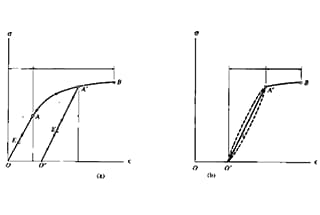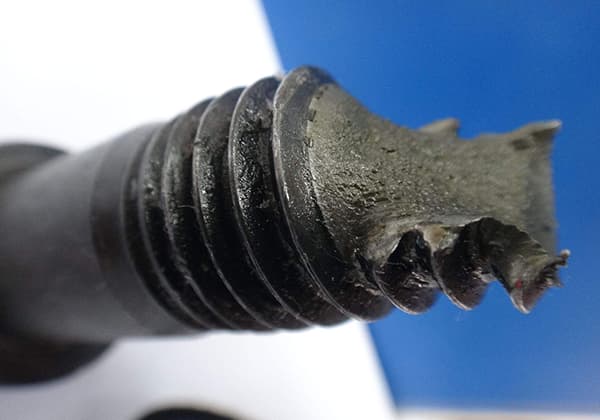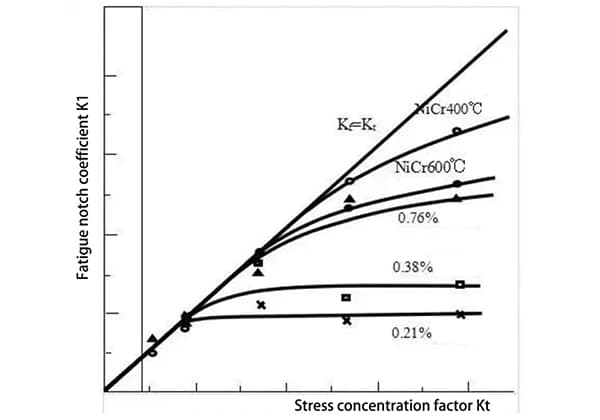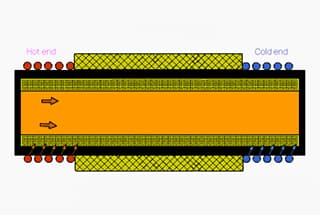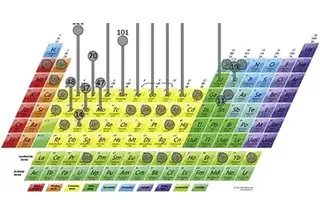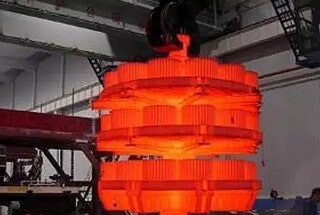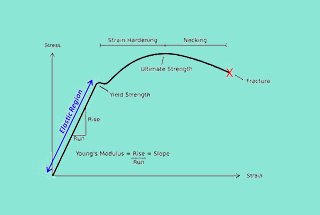
What factors can twist a gear’s shape during heat treatment? Understanding these factors is crucial for improving gear quality. This article explores 12 key elements affecting distortion, from material composition and original structure to quenching processes and residual stress. By grasping these concepts, readers will learn strategies to minimize gear deformation and ensure precision in manufacturing. Read on to uncover the secrets to achieving flawless gears through effective heat treatment techniques.
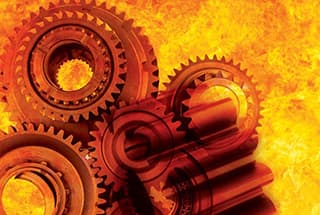
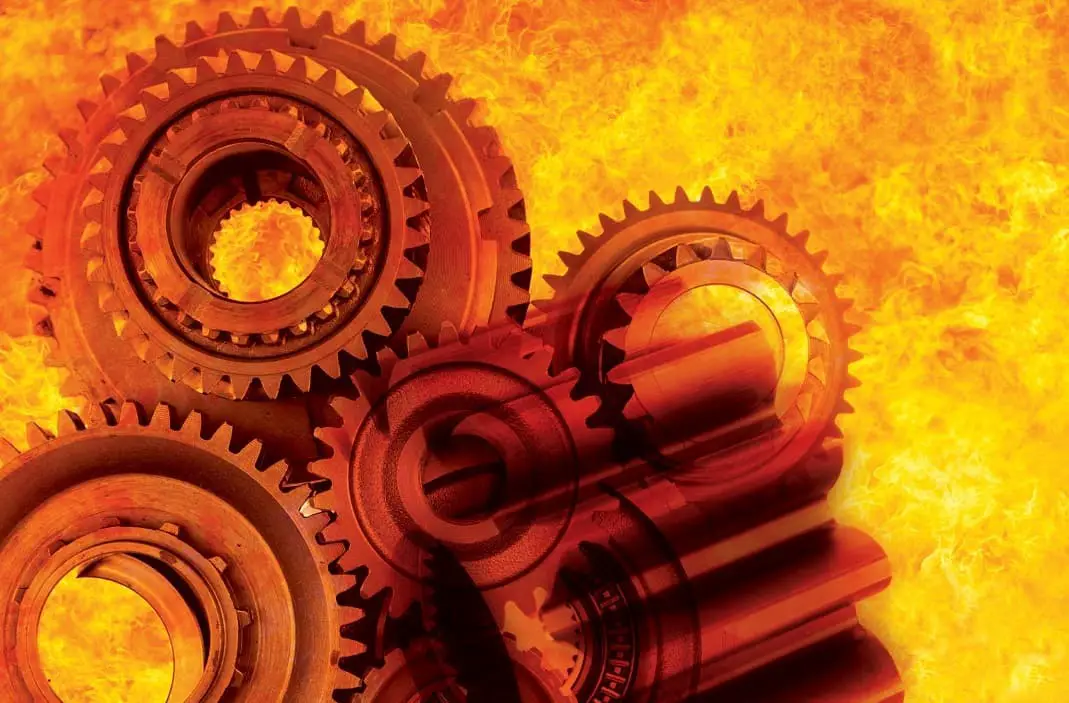
The carbon content plays a pivotal role in determining the extent of warpage and volumetric distortion in gears during the quenching process. As the primary alloying element in steel, carbon significantly influences the material’s hardenability and microstructural changes. Higher carbon content generally leads to increased martensite formation, which is accompanied by a greater volume expansion. This expansion, coupled with non-uniform cooling rates across the gear’s geometry, can result in more pronounced warpage and dimensional changes.
Conversely, lower carbon steels tend to exhibit less distortion but may not achieve the desired hardness. Metallurgists and gear manufacturers must carefully balance carbon content with other alloying elements and quenching parameters to optimize gear performance while minimizing distortion. Advanced quenching techniques, such as controlled atmosphere quenching or intensive quenching, can help mitigate these effects, especially for high-carbon steels used in critical gear applications.
Alloying elements in steel play a crucial role in gear distortion, with their effects varying based on composition and concentration. Elements such as carbon (C), manganese (Mn), nickel (Ni), chromium (Cr), and molybdenum (Mo) generally increase hardenability, which can lead to a higher distortion tendency during heat treatment. This is primarily due to their ability to promote martensite formation and increase the depth of hardening.
However, the relationship between alloying elements and distortion is complex. While chromium (Cr), manganese (Mn), molybdenum (Mo), silicon (Si), nickel (Ni), and titanium (Ti) can contribute to hardenability, they can also help reduce distortion when used in appropriate quantities and combinations. These elements can achieve this through various mechanisms:
The key to minimizing gear distortion lies in carefully balancing these alloying elements to achieve the desired mechanical properties while maintaining dimensional stability. This often involves tailoring the steel composition to the specific gear geometry, size, and intended application, as well as optimizing the heat treatment process to work in harmony with the alloy design.
The relationship between steel hardenability and quenching distortion is indeed complex and critical in heat treatment processes. Higher hardenability steels, which can achieve greater depths of hardening, are more prone to significant distortion during quenching. This is primarily due to the more extensive and rapid martensitic transformation occurring throughout a larger cross-section of the material. Conversely, steels with lower hardenability experience less pronounced quenching distortion. In these cases, the martensitic transformation is limited to shallower depths, resulting in a more gradual transition between the hardened surface layer and the softer core. This differential cooling and transformation pattern leads to reduced internal stresses and, consequently, less overall distortion.
It’s important to note that while hardenability is a key factor, other variables such as part geometry, quenchant selection, and quenching technique also play crucial roles in determining the final distortion. Modern heat treatment practices often employ computer-simulated quenching models and carefully controlled quenching processes to minimize distortion while achieving the desired mechanical properties, especially for high-precision components in aerospace and automotive applications.
The gear design exhibits suboptimal geometric symmetry and inconsistent cross-sectional profiles, potentially compromising its performance and manufacturability. These irregularities may lead to uneven stress distribution, increased vibration, and reduced efficiency during operation.
The spoke configuration in the gear design demonstrates insufficient structural rigidity. This deficiency could result in excessive flexing under load, leading to premature fatigue failure, reduced power transmission efficiency, and increased noise and vibration during operation. Optimizing the spoke design with appropriate cross-sectional profiles and strategic reinforcement is crucial for enhancing overall gear stability and longevity.
The process hole’s location in the gear design is suboptimal, exacerbating heat treatment distortion issues. This misplacement can lead to non-uniform thermal expansion and contraction during heat treatment processes, resulting in warpage, dimensional inaccuracies, and residual stresses. Proper positioning of process holes, considering factors such as material flow, thermal gradients, and stress distribution, is essential for minimizing distortion and ensuring consistent gear quality and performance.
1) The heterogeneity of steel microstructure significantly influences heat treatment distortion. This phenomenon is primarily attributed to coarse grain structures, extensive elemental segregation, and interconnected network structures, which collectively exacerbate dimensional changes and warpage during the quenching process. The non-uniform distribution of these microstructural features creates localized stress concentrations, leading to differential thermal expansion and contraction rates across the component.
2) Microstructural defects, particularly banded structures and elemental segregation, have emerged as critical factors contributing to gear distortion. Banded structures, characterized by alternating layers of different phases or compositions, create anisotropic mechanical properties that respond non-uniformly to thermal stresses. Similarly, segregation-induced compositional gradients result in varying hardenability and transformation kinetics across the gear profile.
3) Macrosegregation in steel ingots frequently manifests as square-pattern segregation in the cross-section of steel materials. This phenomenon is especially problematic in disc gears, where it leads to non-uniform quenching distortion. The segregated regions, with their distinct chemical compositions, exhibit different phase transformation behaviors and volumetric changes during quenching, resulting in localized distortions that compromise gear geometry and performance.
4) Heat treatment distortion patterns in gears exhibit a strong correlation with the casting method used for billet production. Gears manufactured from square continuous casting billets typically display uniform distortion characteristics during heat treatment. In contrast, gears produced from rectangular continuous casting billets demonstrate pronounced directional distortion tendencies. This directionality is attributed to the anisotropic solidification patterns and resultant microstructural variations inherent to rectangular billets, which significantly influence the gear’s response to thermal processing.
5) The relationship between grain size and quenching distortion follows an inverse correlation: finer grain structures result in reduced distortion post-quenching. This phenomenon is attributed to the more uniform distribution of internal stresses in fine-grained materials, as well as their enhanced ability to accommodate strain through grain boundary sliding. Additionally, finer grains provide more nucleation sites for phase transformations, promoting a more homogeneous response to rapid cooling.
6) Non-uniform normalizing treatment of gear blanks is a significant contributor to heat treatment distortion in gears. Inconsistent normalizing practices can lead to variations in grain size, phase distribution, and residual stress patterns across the gear blank. These inhomogeneities create differential responses to subsequent quenching and tempering processes, resulting in unpredictable and often severe distortions that compromise gear accuracy and performance.
1)Proper forging techniques can help reduce distortion in metals.
In particular, creating a streamlined metal structure through forging can minimize distortion during heat treatment. Additionally, careful forging can reduce segregation, promote uniformity in the metal structure, improve banding, and further reduce heat treatment distortion.
2)If the mold cavity is not completely filled with metal, the final heat treatment may be inconsistent and lead to distortion.
3)Forging gear blanks can lead to increased distortion during heat treatment due to high-temperature heating, uneven deformation, and high final forging temperatures.
1) Preliminary heat treatment of gear blanks is a critical step in minimizing distortion during final heat treatment. Isothermal normalizing has been proven to be more effective than conventional normalizing techniques in reducing distortion. This process involves heating the gear blank to the austenitic temperature range, followed by a controlled cooling rate to a temperature just above the pearlite transformation, holding at this temperature for a specified time, and then cooling to room temperature. This method promotes a more uniform microstructure and reduces residual stresses, thereby minimizing the potential for distortion in subsequent heat treatment steps.
2) The heat treatment sequence for gear blanks typically involves quenching and tempering prior to the final quenching process. This intermediate heat treatment, often referred to as “pre-hardening,” serves to refine the microstructure and alleviate internal stresses. When gear blanks undergo this preliminary quenching and tempering, the subsequent distortion during final heat treatment tends to follow more predictable patterns. This predictability allows for better compensation strategies in the manufacturing process. Moreover, the overall magnitude of distortion is significantly reduced due to the stabilized microstructure and stress state achieved through pre-hardening. This approach not only enhances dimensional stability but also improves the gear’s mechanical properties and performance characteristics.
The process of machining gears can induce significant residual stresses, potentially leading to metal distortion. These stresses arise from localized plastic deformation, thermal gradients, and microstructural changes during cutting operations.
During the gear heat treatment process, multiple factors contribute to distortion. Thermal stresses are generated due to non-uniform heating and cooling rates across the gear geometry. Additionally, the elevated temperatures facilitate the release of internal stresses that were introduced during previous manufacturing stages, such as forging or machining. This stress relief can cause dimensional changes and warpage. Furthermore, phase transformations in the material, particularly in steel gears, can lead to volumetric changes and additional distortion. Careful control of heating rates, soak times, and cooling strategies is essential to minimize these distortion effects and achieve optimal gear performance and longevity.
1) The magnitude of thermal stress generated during heating is proportional to the gear’s diameter and thickness. Larger gears experience higher maximum stresses, leading to increased distortion potential. This relationship is governed by the thermal expansion coefficient and the gear’s geometry, with thicker sections creating greater temperature gradients and thus higher internal stresses.
2) In production environments where gears are fixture-clamped during heat treatment, significant temperature differentials can develop across the gear body upon initial furnace entry. These thermal gradients induce localized stresses that may exceed the material’s yield strength at elevated temperatures. Consequently, parts reaching critical temperatures first undergo plastic deformation, resulting in localized distortion that persists after cooling.
3) Slender shaft gears and thin plate gears exhibit heightened susceptibility to warpage distortion when subjected to non-uniform heating, including rapid thermal cycling. This sensitivity stems from their low moment of inertia and high surface area-to-volume ratio, which exacerbate thermal gradients and stress concentrations during heating processes.
4) Uneven heating, particularly from directional heat sources, creates thermal gradients within the gear body. The regions experiencing higher temperatures expand more rapidly, inducing compressive stresses. Upon cooling, these areas contract, often resulting in concavity on the side that reached higher internal temperatures. This phenomenon is especially pronounced in gears with asymmetric geometries or those heated using infrared or induction heating methods.
5) The heating rate is a critical parameter in gear heat treatment, directly influencing the magnitude and distribution of thermal stresses. Rapid heating can create steep thermal gradients, leading to non-uniform expansion and potentially exceeding the material’s ability to accommodate strain. This can result in various forms of distortion, including warping, twisting, or localized deformation, particularly in complex gear geometries or those with varying cross-sections.
The cooling capacity of the quenching medium directly influences the quenching intensity (H), which in turn affects the temperature gradient between the surface and core of the gear (or across different thicknesses). A higher cooling rate leads to a more severe temperature gradient, resulting in greater internal stresses and potential distortion.
The relationship between distortion and the quenching process is complex, depending on several factors:
Each quenching medium has a unique cooling curve that affects the transformation kinetics of the steel during quenching, ultimately impacting the final microstructure and distortion.
2) Uneven cooling
Distortion during quenching can result from various factors that contribute to non-uniform cooling:
To minimize distortion, it’s crucial to optimize these factors through proper gear design, fixture engineering, and quenchant agitation techniques.
3) Quenching cooling medium temperature
Elevating the temperature of the quenching medium, particularly quenching oils, can indeed reduce gear distortion during heat treatment. This approach, known as “marquenching” or “martempering,” offers several benefits:
However, it’s important to note that increasing quenchant temperature must be carefully balanced with the need to achieve the desired microstructure and mechanical properties. The optimal quenchant temperature should be determined through experimentation and potentially supported by computer simulation to ensure both minimal distortion and adequate hardness are achieved.
The distortion of the gear is greatly influenced by the clamping and hanging methods, slings, and their supporting methods when loading the gear into the furnace. This is especially true for thin-walled ring gears with a large inner and outer diameter. In addition to the expansion and contraction of the inner and outer diameters, it can often cause the roundness to be out of tolerance.
Improper charging of the furnace can easily produce large high-temperature creep, which can affect the flow of the quenching cooling medium and the uniformity of gear cooling during quenching. As a result, the uniformity of distortion and distortion is affected.
The impact of quenching temperature on Warpage distortion is significantly greater than on volume distortion.
In general, raising the quenching temperature results in increased gear distortion.
Distortion is caused by uneven heating.
If gears have gone out of tolerance due to poor heat treatment quality, repeating the quenching process during repair can result in an increase in distortion due to the additional quenching cycles.
The gear cools at a high speed, which causes volume expansion simultaneously. If the cooling is not uniform, it can result in greater distortion.
In dual medium quenching or step quenching, the residence time in the first medium is long.
The quenching cooling medium’s high fluidity and impact on the gear have a significant influence on the distortion of the gear during heat treatment.
This issue is often linked to the breach of process regulations during operation.
For instance, during the tapping process, the gears may collide with one another. Moreover, the impact between the gear and the furnace, furnace body, furnace door, or other hard objects can result in gear distortion.
When the gear is quenched out of the furnace, an unstable operation and significant shaking can further intensify gear distortion, especially when it comes to slender gear shafts and thin plate gears.
Changes in the size of tempered gears are primarily caused by transformations in their microstructure.
For gears with high alloy element content or requiring high precision, a cold treatment is often performed at below-zero temperatures to further transform the retained austenite into martensite, which leads to an increased level of distortion.
Moreover, it should be noted that the expansion size tends to increase with higher quenching temperatures.
The main cause of aging distortion in gear quenched structure is the amount of retained austenite.
During natural aging, stress relaxation occurs due to hydrogen escape. This relaxation and stress release may cause a transformation of a small amount of retained austenite.

